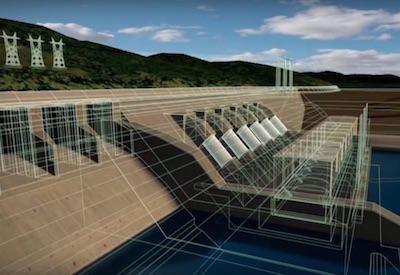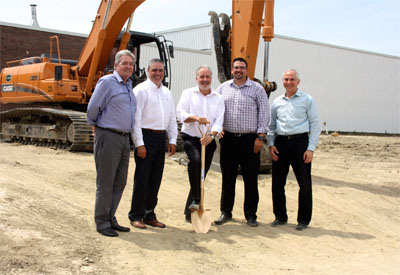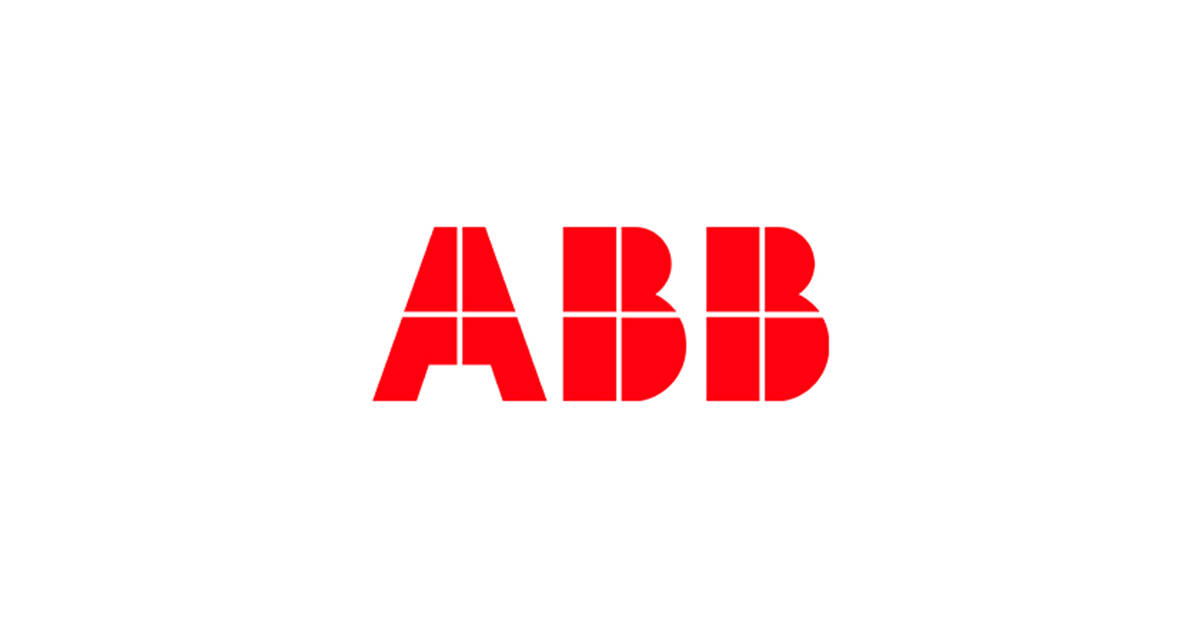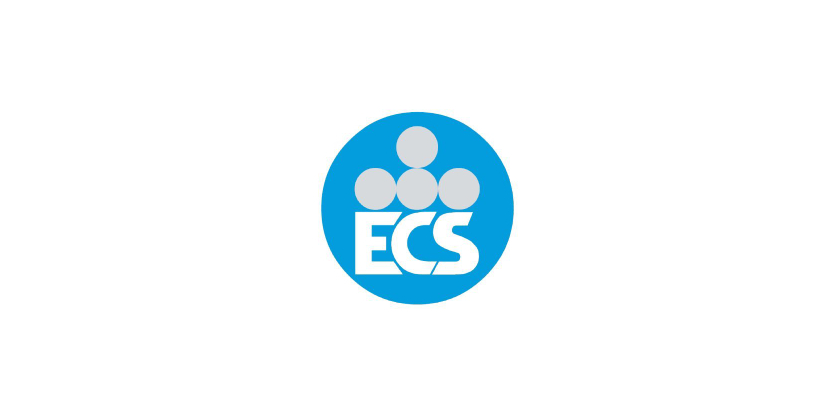New Single Window for ZEV Infrastructure Applications
February 2, 2023
Reducing pollution from the transportation sector is critical to Canada achieving its climate targets. That’s why the Government of Canada is making it more affordable for Canadians to purchase, charge and drive electric vehicles (EV) across the country.
ZEV Infrastructure Landing Page
Recently, Julie Dabrusin, Parliamentary Secretary to the Minister of Natural Resources and to the Minister of Environment and Climate Change, on behalf of the Honourable Jonathan Wilkinson, Minister of Natural Resources, launched a new, integrated, federal zero-emission vehicles (ZEV) infrastructure landing page.
The ZEV infrastructure landing page is an NRCan-led web presence dedicated to information on federal programs supporting the deployment of electric vehicle (EV) chargers and hydrogen refuelling infrastructure. This landing page, developed by Natural Resources Canada (NRCan) in collaboration with Infrastructure Canada and the Canada Infrastructure Bank (CIB), consolidates federal program streams, including the Zero Emission Vehicle Infrastructure Program (ZEVIP), the CIB’s Charging and Hydrogen Refuelling Infrastructure Initiative and Infrastructure Canada’s Zero-Emission Transit Fund. It will help Canadians locate federally supported and publicly accessible chargers from coast to coast to coast.
In order to ensure Canadian businesses and organizations have access to the most comprehensive federal funding for their ZEV infrastructure projects, NRCan and CIB have developed an infrastructure pre-screen that will identify the funding opportunities best suited to their needs. This new, single window is the result of close collaboration between NRCan and CIB, as they are jointly delivering on the commitment to support the installation of an additional 50,000 chargers and hydrogen refuelling stations.
Dabrusin Announces New EV Chargers in Vancouver
Parliamentary Secretary Dabrusin also announced a $280,000 investment in PCI Developments to install 75 EV chargers at two multi-unit residential buildings (MURBs) in Vancouver.
Funded through NRCan’s ZEVIP, the chargers will be available to Vancouverites by November 2023. PCI Developments also contributed over $280,000, bringing the total project cost to over $560,000.
Since 2016, the Government of Canada has invested a historic $1 billion to make ZEVs more affordable and chargers more accessible for Canadians. These investments are supporting the establishment of a coast-to-coast network of chargers in local areas where Canadians live, work and play, while federal rebates of up to $5,000 are helping more Canadians make the switch to a ZEV. The federal government has approved funding to support the installation of over 34,500 ZEV chargers to date.
Budget 2022 delivered an additional $400 million to NRCan and $500 million in financing through the CIB, which is advancing the deployment of 50,000 new EV chargers by 2027. It also announced $1.7 billion to extend the zero-emission vehicle purchase incentive program until March 2025 and the expansion of the types of vehicle models eligible under the program, which would include more vans, trucks and SUVs.
These investments are steps toward reaching Canada’s target of ensuring that all new passenger vehicles sold in Canada are zero-emission by 2035 and that 100 percent of medium- and heavy-duty vehicles sold will be ZEVs by 2040, where feasible. And just like investments in everything from clean technology to nature protection, today’s update is part of achieving Canada’s ambitious climate change goals to build a cleaner, healthier and affordable future for all Canadians.
Quotes
“We’re making electric vehicles more affordable and charging more accessible where Canadians live, work and play. Investing in more EV chargers, like the ones announced today in Vancouver, B.C., will put more Canadians in the driver’s seat on the road to a net-zero future and help achieve our climate goals.”
The Honourable Jonathan Wilkinson
Minister of Natural Resources
“I was pleased to announce federal support for the deployment of 75 new EV chargers in two of Vancouver’s multi-unit residential buildings. Projects such as this are vital to reducing emissions, providing Canadians with access to charging and creating sustainable jobs. The Government of Canada is supporting these vital projects through a newly enhanced set of digital resources to access funding from federal departments and the Canada Infrastructure Bank.”
Julie Dabrusin,
Parliamentary Secretary to the Minister of Natural Resources
and to the Minister of Environment and Climate Change
“Investments in infrastructure that accelerate Canada’s transition toward net-zero are a key element of the CIB’s mandate. Through initiatives like our zero-emissions fleet lending program to our recently announced $500 million Charging and Hydrogen Refueling Infrastructure Initiative, the CIB is moving at scale and speed to make this a reality. By collaborating with partners in both the public and private sectors, and by working with NRCan and other federal departments, the CIB is making significant progress in reducing the carbon intensity of Canada’s transportation sector.”
Ehren Cory
CEO, Canada Infrastructure Bank
“PCI Developments is recognized for building communities that prioritize sustainable lifestyles and transportation choices. We are collaborating with Natural Resources Canada and Clean BC to deliver EV chargers at several of our new developments across Metro Vancouver, including in Vancouver at two of our residential rental buildings and in Surrey at King George Hub, our comprehensive, mixed-use, transit-oriented community that will have close to 800 EV chargers. All told, the chargers at these three PCI projects represent a shared investment of more than $6 million.”
Brad Howard
Director of Development, PCI Developments
Quick Facts
- On December 12, Minister Wilkinson opened two calls to apply for funding for the nearly $200-million Green Freight Program and the Zero-Emission Vehicle Awareness Initiative‘s (ZEVAI) new medium- and heavy-duty stream to help drivers save money at the pump while contributing to Canada’s fight against climate change. This is in addition to the ongoing call for applications under the $2.75-billion Zero Emission Transit Fund that supports school and transit bus operators in putting more zero-emission buses on Canadian roads and building the associated infrastructure.
- Canada’s Critical Minerals Strategy will help advance the development of Canadian critical minerals resources and value chains — including metals for clean technologies like electric vehicles and advanced batteries — to enable the transition to a low-carbon economy and support advanced technology and manufacturing. The Strategy is supported by nearly $4 billion in federal investments over eight years.
- Thanks to the funds invested to date by the Electric Vehicle and Alternative Fuel Infrastructure Deployment Initiative (EVAFIDI) and Zero-Emission Vehicle Infrastructure Program, more than 34,500 new charging stations will be installed where Canadians live, work and play by 2027.
- Budget 2022 provided NRCan’s ZEVIP with an additional $400 million to fund the deployment of ZEV charging infrastructure in sub-urban and remote communities, and it announced that the CIB will invest $500 million in large-scale urban and commercial ZEV charging and refuelling infrastructure to deploy an additional 50,000 electric vehicle chargers by 2027.
- To date, over 150,000 Canadians and Canadian businesses have taken advantage of the federal incentive to purchase a zero-emission vehicle.
- Launched in 2021, the $2.75-billion Zero Emission Transit Fund offers support to public transit and school bus operators across Canada who are electrifying their fleets.
- Thanks to the $300 million in funds over five years allocated in Canada’s Strengthened Climate Plan, the Government of Canada is ensuring that rural, remote and Indigenous communities that currently use diesel have the opportunity to be powered by clean, reliable energy by 2030.
- Fifty-eight percent of Canadians have never ridden in or driven a ZEV, but 79 percent would be interested in taking one for a test drive.
- The Green Freight Program and the medium- and heavy-duty stream of the ZEVAI build on Minister Alghabra’s announcement of Transport Canada’s Incentives for Medium- and Heavy-Duty Zero-Emission Vehicles (iMHZEV) program in July. These incentives reduce emissions by helping businesses and communities across the country make the switch to zero-emission vehicles.
- The iMHZEV Program is expected to result in annual greenhouse gas emission reductions of up to 200,000 tonnes per year in 2026, growing to three million tonnes per year by 2030.

















